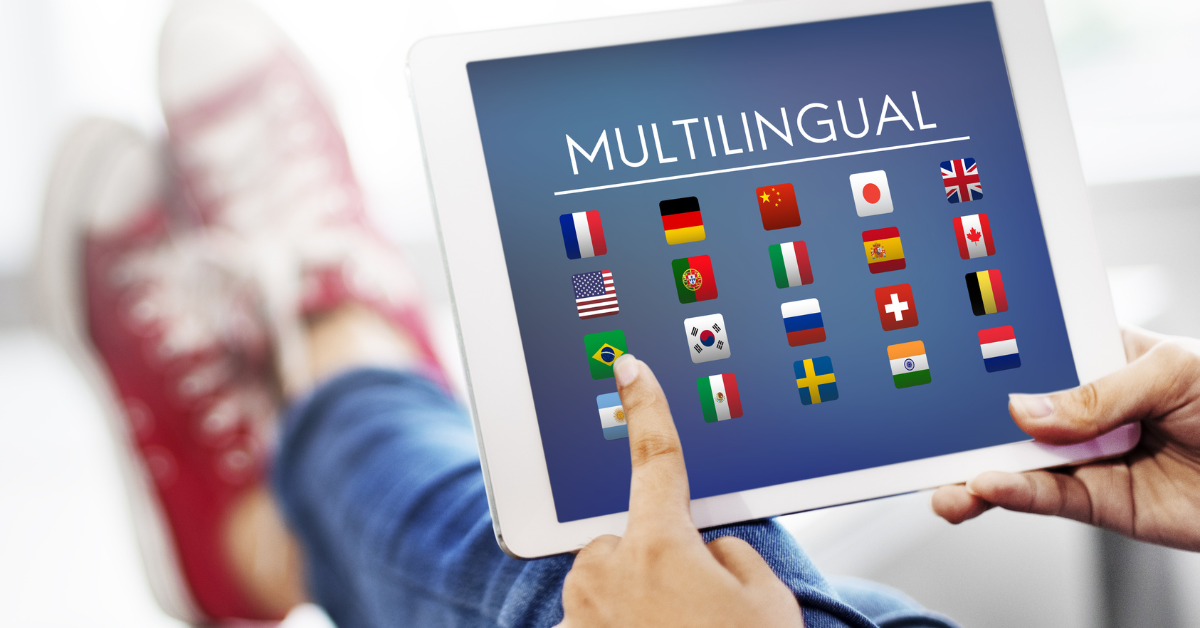Ecommerce has become one of the most popular ways for users to shop in recent years. A multilingual website makes it possible to buy and sell from anywhere in the world, at any time of the day, so covering new commercial niches internationally is already the goal of all ecommerce.
But expanding and achieving an online presence suited to each market requires doing business in the language of the target countries.
What is a multilingual website?
This is one of the key issues to be resolved. An international online store must have a multilingual website if it’s to be positioned as a leader in a multilingual environment against the competition. Implementing a multilingual corporate strategy is just one of the things that can provide the following benefits:
- Control and distribution by department and user.
- Specialization in different sectors and areas of expertise.
- Customization and adaptation to corporate culture.
- Compliance with the leading international quality standards.
- Multiple file formats.
- Fast and timely service.
- Real-time tracking and control for centralized monitoring.
- Smart saving systems that don't compromise on the quality of the product or the service itself.
Creating a multilingual website What are the steps?
Creating a multilingual website involves a number of factors that you need to consider before embarking on the translation process:
1. Recruit a specific solution
Ecommerce businesses have unique requirements: from platforms to global content, SEO positioning, product semantics, and other types of information that require specific solutions when being translated.
This is where the different multilingual solutions available come into play: ATLAS Real Time, GBC User, GBC Server, Proof Editor, Remote Interpreting, Machine Translation with Human Postediting and Cava de Documentos.
The latter case, Cava de Documentos, a valuable from Linguaserve enabling clients to store, differentiate, and classify each document in specific memories, is an outstanding example. In short, it’s a system for optimal management of recurring content versioning.
2. Start with an initial web translation
Website translation requires technical and linguistic solutions capable of simplifying and ensuring that it works correctly in different languages. So, it’s not only a simple translation, but also a website localization that encompasses different practices:
- International website construction analysis.
- Proper treatment of each layer of the system (business and data logic visualization).
- Template design analysis to guarantee compatibility with the required languages.
- Localization and testing of literals and functional elements for proper web browsing.
- Content translation, review, localization, and integration.
- Processing of several formats and standards.
- Analysis of requirements and technology to plan ahead and determine the best solution for multilingual updating in the future.
Linguaserve's localization service takes all these aspects into account, as well as the relationship between language and culture. Cultural aspects like onomatopoeias, references to popular culture, or even images are considered.
It all boils down to making every one of the company's customers around the world—no matter where they are—feel at home. To do that, we always strive for the highest linguistic, technical, visual, and functional quality.
Ensure continuous maintenance
The key to success is to conduct continuous maintenance on the multilingual website to realize the full potential of the business internationally through content that is translated and published in a timely manner.
In part, this maintenance is ensured by plugins for WordPress that easily translate any content on a website. This makes it very easy to maintain multilingual pages. Simply select the content to be translated and send it directly through the interface.
If you do not use WordPress or AEM (Adobe Experience Manager), there are also other connectors available.
Multilingual ecommerce solutions
Web platforms, their types of content, update frequency, SEO requirements, semantic consistency of products... Each of the unique features found in an online store can be adapted through the different forms of interoperability:
- SOAP and RESTful Web services and real-time proxy publishing.
- Workflow connection.
- Automatic task activation.
- Use of XML, XLIFF and metadata.
- HTML and HTML5.
- Processing HTML code within XML structures.
- Effective and integrated management.
- Unattended activation of the translation and localization.
- Reduced management and monitoring efforts.
- WAI processing (A, AA, AAA).
With GBC Server, you can forget about copying and pasting, exporting and importing. Save time and money and take better control of your website with this solution that minimizes mistakes and ensures a secure, agile and efficient system.
Multilingual SEO
One of the most important aspects of web translation resides in maintaining the effectiveness of keywords for positioning in all languages of the website. But the lexical and semantic suitability of the terms isn’t enough. They also need to be adapted to the searches that are actually made in each market.
The professionals at Linguaserve who are responsible for this task have a perfect understanding and knowledge of the target market. They know full well that keywords (the most searched terms in a destination) do not necessarily have to be a literal translation of the original language.
Basic standards
Multilingual content is viable online only through the use of certain metadata standards. That's why the MultiLingualWeb-LT Working Group has developed the Internationalization Tag Set Version 2.0 standard, which includes a set of powerful metadata that enable the promotion of multilingual internet content.
In short, website globalization is essential for businesses looking to establish an international presence, and one way to go a step beyond a multilingual website is to adapt multilingual communication strategies to reach a global market: maintenance, SEO, an online store, Intranet and all the information systems needed to do business.
If you still have any concerns, or you don't know where to start to ensure quality versions of the website in the different languages, you can always turn to Internationalization, Localization and Translation (GILT) methodologies, tools and professionals.
Now you know how to create a multilingual website. What are you waiting for? The time is now to create a multilingual website and internationalize your online store?










